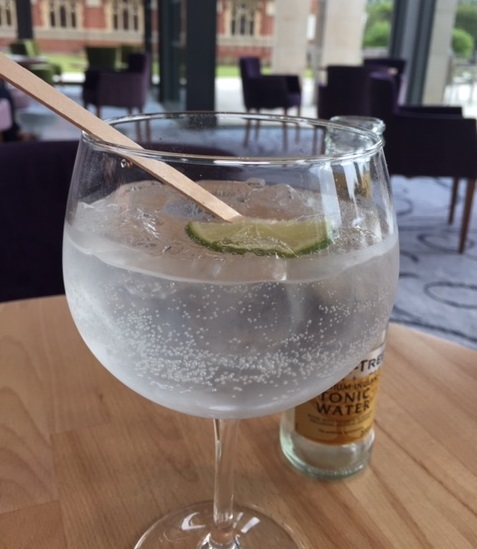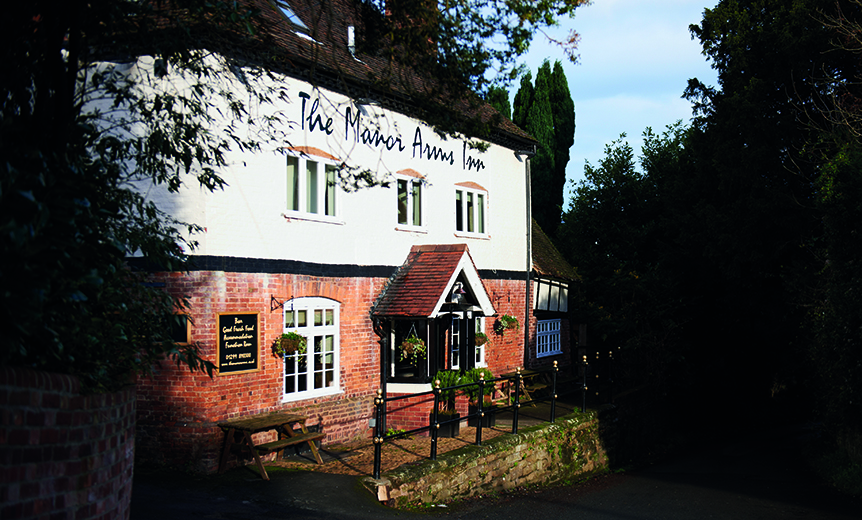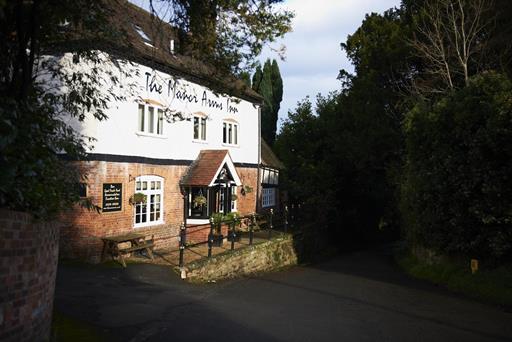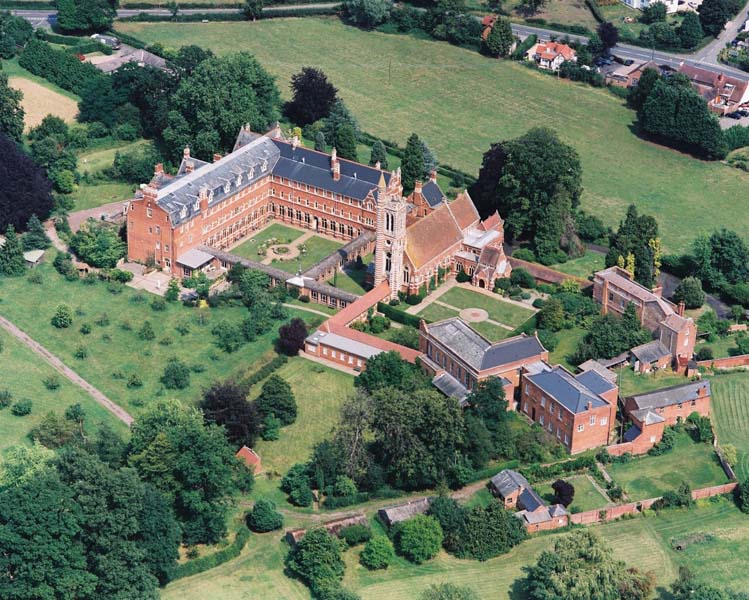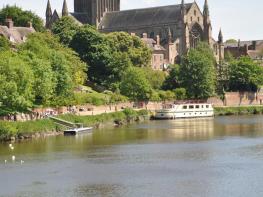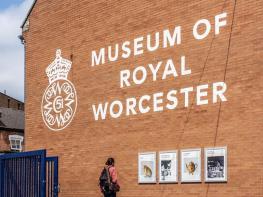This charming farmhouse is conveniently located just off the M5 yet offers a peaceful and…
Droitwich Spa and around

5.75 miles (9.2kms)
About the walk
Given that seawater is salty, it is not surprising to find salt pans by the Atlantic or on the Mediterranean coast. But how has salt been produced in Droitwich since prehistoric times? The answer is simply that the ground is rich in rock salt. The brine from the town’s salt springs is far denser than sea water – 2.5lb of salt could be extracted by boiling a gallon of Droitwich’s brine (about 250g from each litre).
Droitwich was an important Roman crossroads – the suggested map shows that the A38, the B4090 and the minor road to the north, Crutch Lane, all have Roman origins. They had a fort at Dodderhill (just north of Vines Park) and, when the railway was constructed in 1847, two mosaic pavements were stumbled upon. Later archaeological work found a Roman corridor house about 130ft (40m) long. Salt tax was a good earner for the monarch, up until its abolition in 1825. Ownership of 25 salt-evaporating pans contributed to the wealth of the Wintour family, who gained notoriety as participants in the 1605 Gunpowder Plot.
In 1845, when aged 28, John Corbett used capital from the profits of his father’s canal business to buy and update a derelict salt works about 4.5 miles (7.2km) northeast, at Stoke Prior. He did the right thing at the right time. His works, Europe’s largest, made him a fortune, much of which he pumped back into the company, improving working conditions and raising wages (to the extent that wives no longer needed to work), and also into the area, Droitwich Spa in particular. In France, in 1855, he met Anna (or Hannah) O’Meara, who lived in Paris with her French mother and Irish father. Corbett married her the following year. They had six children. Such was her apparent craving for France that he commissioned an architect to build him a French château, Château Impney, completed in 1875 for a staggering £247,000. Despite this, they separated after 28 years of marriage. In 1879 Corbett bought, and vastly improved, St Andrew’s House. He renamed it the Raven Hotel, after the raven on the Corbett family’s coat of arms (from the French le corbeau, meaning raven…which sounds a bit like ‘Corbett’).
To some extent, the use of ice and, later, refrigeration, as a means of preserving meats and other foods contributed to the decline of Droitwich’s salt production, which ceased in 1922. Most recently, in a triumph of shopping over heritage, the Salters’ Shopping Centre has been ‘rebranded’ as St Andrews Square.
Walk directions
Begin outside the library walk west, along Victoria Square and then into Ombersley Street East. When it bends go straight on, passing a medical centre. After an underpass proceed to St Nicholas’ Church. Go beyond the churchyard then right, to take another underpass. Turn left. Take the road over the railway to a roundabout, filtering right to go through a third underpass. Walk for 50yds (46m) to a fence corner, near a lamppost. Turn left, marked ‘Cycleway 45’. In 30yds (27m) turn right. At the bottom of this cul-de-sac, Westmead Close, turn left. Soon take Ledwych Close, on the right. At the canal you are effectively out of Droitwich Spa.
Turn left. At the bridge turn right, passing sports facilities and schools. Turn left just beyond the A38 bridge, into Westwood Way. In 110yds (100m) reach the Westwood House slip road. Facing some allotments, take a gate to the left and walk parallel to the allotments. Beyond this woodland, through a kissing gate, reach a driveway. Cross a truly enormous arable field. Over a track and another driveway, finally reach a corner of Nunnery Wood.
Turn sharply right. Electric fencing shepherds you between paddocks before you veer left to walk briefly through Nunnery Wood. (Ignore tracks left.) Aim for two gates beside trees on the skyline. Keep straight on for 0.5 miles (800m), near the Müller Droitwich plant on the left, then curving left past an industrial estate to reach Doverdale Lane.
Turn right. Just before a ‘30’ speed-limit sign, fork left. Cross the A442. Walk through the hamlet of Hampton Lovett to St Mary’s Church. (It is asymmetrical, having a curved Norman column on its left side.) Take the meadow path under the railway. In 140yds (128m), at a footbridge, bear right, along a field-edge. Keep following this general, waymarked line for over 0.5 miles (800m), walking outside the right edge of the trees beside Highstank Pool. Go forward with hedgerow on your left; when it stops abruptly aim across a large field to clip corner greenery – young evergreens shielding a golf tee.
Keeping the same line, cross a vast field (in fact, just more of the same field!), through a kissing gate, a small new metal gate. Now aim slightly left to another metal gate. Follow the road under the A38 into a housing estate. Go forward, then down for about 150yds (137m), to find a tarmac path running between Nos 49 and 53 (51 is hidden). Go through two kissing gates flanking the level crossing. Turn left to The Gardeners Arms. Here turn right over the River Salwarpe, into Vines Park. Veer left to cross the Droitwich Canal. Cross this busy road and walk down the right side of a supermarket to High Street – in front of you is Spats Coffee House. Turn right, passing Tower Hill, then left into St Andrew’s Street and then back to the start of the walk.
Additional information
Pavements, field paths, stony tracks
Agricultural lowlands, coppices, historical town
Some country stretches but too urban to be much fun
OS Explorer 204 Worcester & Droitwich Spa
Long-stay pay-and-display. Alternatively, the Lido long-stay pay-and-display on Worcester Road
St Andrews Square shopping centre
WALKING IN SAFETY
Read our tips to look after yourself and the environment when following this walk.
Find out more
Also in the area
About the area
Discover Worcestershire
Worcestershire is a county of rolling hills, save for the flat Vale of Evesham in the east and the prominent spine of the Malverns in the west. Nearly all of the land is worked in some way; arable farming predominates – oilseed rape, cereals and potatoes – but there are concentrated areas of specific land uses, such as market gardening and plum growing.
Worcester is the county town, and home to Worcestershire County Cricket Club, which has what some regard as the most attractive grounds in the country, in a delightful setting with views of Worcester Cathedral. The Malverns, Great and Little, set on the slopes of the Malvern Hills, are renowned for their refinement. Great Malvern, terraced on its hillside site, came to prominence as a genteel spa for well-to-do Victorians, rivalling the likes of Bath, Buxton and Cheltenham with its glorious surroundings.
Sir Edward Elgar was a Worcester man, and his statue stands on the High Street, facing the cathedral. The cottage where he was born is now a museum and he is commemorated on the £20 note. Other notable Worcestershire figures include poet A E Housman, chocolate magnate George Cadbury; and Lea and Perrins, inventors of Worcestershire sauce.
Nearby stays
Restaurants and Pubs
Nearby experiences
Recommended things to do
Why choose Rated Trips?
Your trusted guide to rated places across the UK
The best coverage
Discover more than 15,000 professionally rated places to stay, eat and visit from across the UK and Ireland.
Quality assured
Choose a place to stay safe in the knowledge that it has been expertly assessed by trained assessors.
Plan your next trip
Search by location or the type of place you're visiting to find your next ideal holiday experience.
Travel inspiration
Read our articles, city guides and recommended things to do for inspiration. We're here to help you explore the UK.



